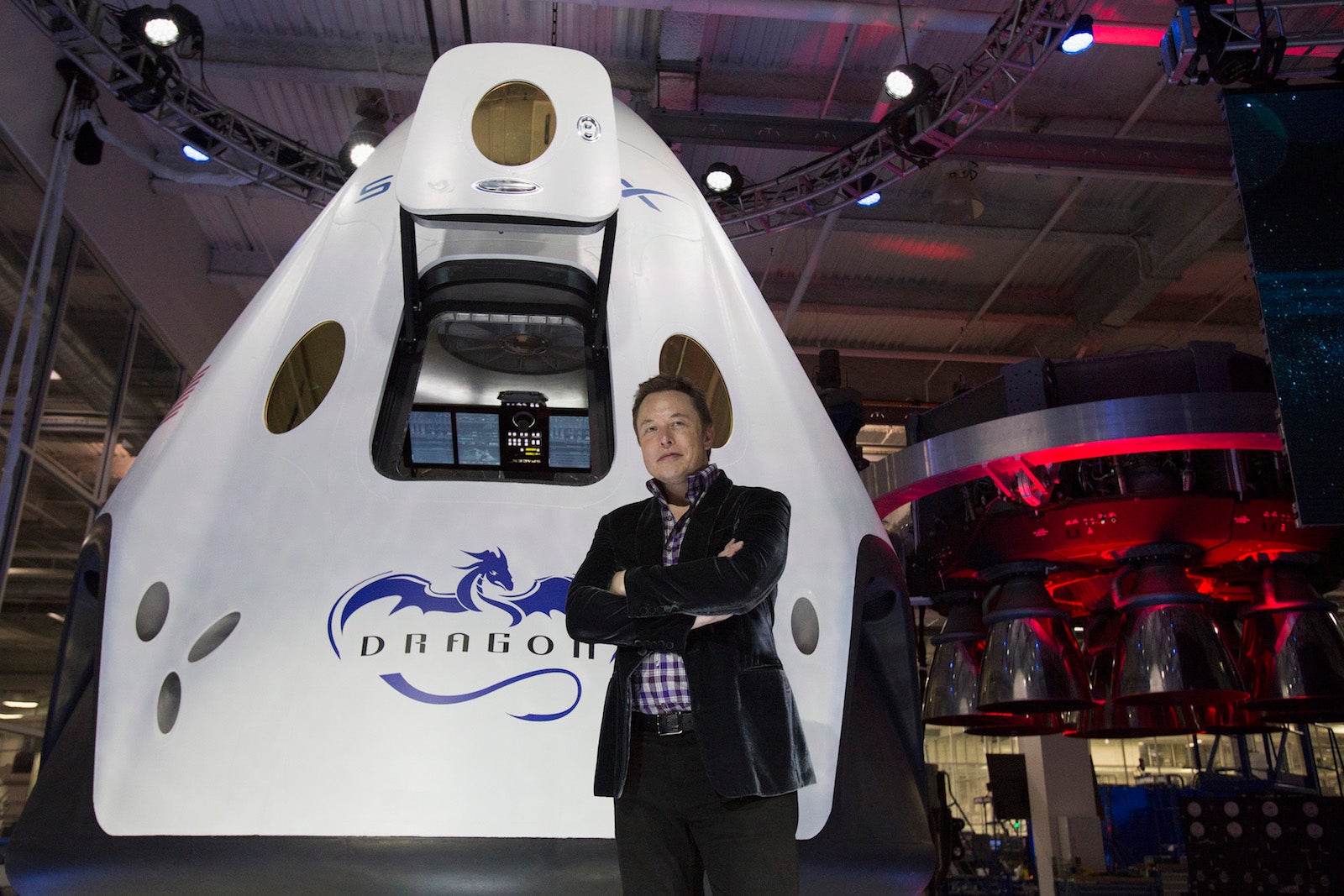SpaceX announced a new moon mission. We’ve got questions
Elon Musk’s rocket-making company says it has signed the first paying passenger for a trip around the moon in its yet unbuilt BFR rocket. SpaceX is deferring all questions until a Sept. 17 event that will reveal the identity of the passenger, but in the meantime, this is what we’d like to ask.


Elon Musk’s rocket-making company says it has signed the first paying passenger for a trip around the moon in its yet unbuilt BFR rocket. SpaceX is deferring all questions until a Sept. 17 event that will reveal the identity of the passenger, but in the meantime, this is what we’d like to ask.
What happened to the OTHER lunar tourism announcement?
In February 2017, Musk announced that two unidentified tourists had put down a “significant deposit” to fly around the moon in 2018 on the crew Dragon vehicle SpaceX is building to fly astronauts to the International Space Station. Even then, this timeline was dubious, and Musk admitted earlier this year that the mission is off, saying the company had no plans to certify its Falcon Heavy rocket to launch people. SpaceX is unlikely to fly people until it fulfills its delayed obligations to carry those astronauts, perhaps as soon as April 2019. Did these people give up on waiting and lose their deposits, or what?
If the mission has been kiboshed completely, we can add it to the trial martian missions that also fell into the dustbin of history.
When will the BFR be done—and what the heck is it?
SpaceX says this mission will use the BFR aka “Big Falcon Rocket,” among other aliases. BFR was revealed in 2016 as the reusable vehicle to fulfill SpaceX’s mission of going to Mars, and updated in 2017 as a do-anything vehicle that could go to the moon, Mars, or even Shanghai.
The diversity of missions suggests a complicated vehicle, and without a doubt an expensive one. Informed cost estimates range well past $200 million, and the rocket is unlikely to fly until 2022. SpaceX’s most successful vehicles have been tailored to specific markets for satellite launch or transit to the International Space Station. Where does flying one extremely loaded tourist around the moon fit in?
Why is SpaceX talking about this now?
SpaceX is racing to complete the aforementioned spacecraft to carry astronauts to the International Space Station, as well as fly out its extensive cargo manifest and build the BFR. But the last vehicle won’t be ready to fly for several years. Is the timing of this announcement designed to distract from other news items in Musk’s empire? Or is this designed to make a statement, as the previous lunar tourism announcement also coincided with NASA doubling-down on its return to the moon?
Who is going on the trip?
This may be the first question SpaceX would like us to ask, but ultimately, the answer is someone with a lot of spare cash. Musk may have given Twitter followers a clue when he tweeted a Japanese flag in response to questions about the passenger. (Masayoshi Son, call your office.) The two passengers on the previously promoted lunar voyage may have come from a veteran organization called Space Adventures that has brokered tickets for past spaceflight participants, who typically paid between $20 and $30 million to fly to the ISS. The company had extensively planned a private mission to orbit the moon and only needed the spacecraft to execute it.